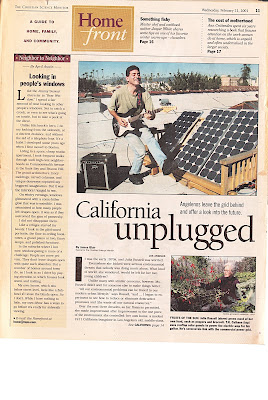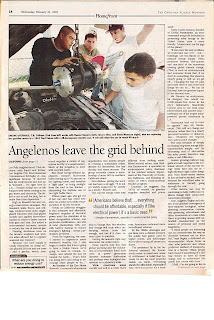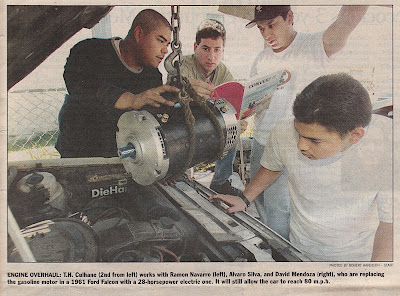"Under the patronage of UNESCO and the United Nations Environment Programme (UNEP) and with the support of the Swiss National Commission for UNESCO, the Association Melody for Dialogue among Civilizations (www.melodydialogue.org) is organising a two-part programme with the theme "Music for a Green Planet".
One is an International Forum to be held at Geneva’s International Conference Centre (CICG). High-level participants will explore the relationship between music, the environment and sustainable development. It will focus on the potential of music and musical dialogue to heighten awareness of environmental issues – such as water, the oceans, forests, energy and climate change. This Forum will be followed by the second part of the programme, an innovative multi-cultural concert at Geneva’s prestigious Victoria Hall".
As we prepare to participate as speakers at this exciting "Melody Dialouge" Conference we are pausing to review how we got started in this business of using music to teach science:
The video above was the first Melodic-Mnemonic song I wrote during my first year as a science teacher at Crenshaw High School in South Central Los Angeles back in 1989.
The lyrics can be obtained here if you want to sing it with your own students, kids or medical school friends: http://melodic-mnemonics.blogspot.com/2009/09/cytoplasm-blues.html
Why did I pick this topic? Because an understanding of "the lives of a cell" (to quote the title of one of my favorite books by Lewis Thomas which I read in high school -- or rather, in spite of high school!) seemed fundamental to all of our understandings of how our ecosystems and our environment works. As Lewis Thomas wrote,
"I have been trying to think of the earth as a kind of organism, but it is no go. I cannot think of it this way. It is too big, too complex, with too many working parts lacking visible connections. The other night, driving through a hilly, wooded part of southern New England, I wondered about this. If not like an organism, what is it like, what is it most like? Then, satisfactorily for that moment, it came to me: it is most like a single cell."
I didn't write the song to "teach" cell biology to my students, rather I wrote the song because I was in love with the book, in love with the topic, in love with biology, in love with life. I felt there was no better way to celebrate my love of science than to use the artistic side of my brain to express how I was learning to see the world.
I actually started this trend in 1985 when I was at Harvard and was inspired by Stephen J. Gould when he came into class and sang the geologic eras as a close-harmony acapella song accompanied by a tape of his singing group doing the doo-wop. And Tom Lehrer's song about "The Periodic Table" was played for us in Chemistry Class by Nobel Prize winner Dudley R. Herschbach who was also my house master at Harvard's Currier House.
My very first song for science was thus written for my Harvard Senior thesis in Biological Anthropology in 1985, called "A Talking Seal? Get Outta Here". It accompanied a music video that Steve Sessions and I made of Hoover, the Talking Seal -- the only known mammal to spontaneously reproduce human speech.
My second science music video was "The Classification Rap", which was aired on Beverly Hills Community Television from 1990 to 1995 and may have been seen by a few hundred people, but now, thanks to "youtube" has been seen in the past two years by more than 30,000 viewers and is used in schools all over the world. From the emails I get each month on my youtube account I've learned that kids are being inspired by this to make their own songs to help them and their friends learn science. It is certainly fun communicating and interacting with science students around the world this way, decades after I have formally left the class room.
But the Cytoplasm Blues, my very first attempt at this when I moved to "the 'hood" to start tackling the "inner city school problem" evolved during my first month teaching when I brought in a guitar and, in a Burl Ives fashion, tried to explain through a call and response song how to think of "the lives of a cell" and what went on within the cell membrane, using easily understandable metaphors. The call and response theme worked well in place of "rote memorization" -- by getting the students to use a time honored Cab Calloway type technique they seemed to enjoy the repetition that goes with memorization much more.
Of course back in 1989 we didn't have things like "video projectors" and "Power-Point" and other visual multi-media easily available, so I would write all the vocabulary on the blackboard and put up posters and diagrams of cells and organelles around the room. Then I would get out my guitar and get some of my students to literally stand on the tables with me (in a Robin Williams, 'carpe diem' Dead Poets Society kind of way!) , holding diagrams of cells they themselves had made and start the call and response song. Using "Drama in Education", acting out the story of the "lives of a cell", gave the students a kinesthetic, whole-body-whole-mind, multiple intelligence feel for the subject matter.
The experience led us to become one of the NASA/McGraw Hill/Business Week "Challenger 7" Teaching Fellows. McGraw Hill Published Culhane's lesson plan for teachers around the country to replicate (click on scanned pages to enlarge. You can also download the entire document as a pdf at http://solarcities.eu/Articles/TouchingTheFuture.pdf):
The method we use now in workshops around the world is very similar 20 years later except that the technology has caught up with the vision. Students can record music and video on their laptops and download the images -- which we used to painstakingly scan from their textbooks -- from the internet and then share their "self-made educational materials" with the world on youtube.
The simplest way to do a melodic-mnemonic is what we show in the Cytoplasm Blues video:
1) Record the song onto your laptop and put it in the audio track of your video editing program, or as an audio file in Powerpoint.
2) Type the lyrics into PowerPoint (or OpenOffice.org's Impress (freeware!) or any equivalent presentation software.)
3) Browse the web for the appropriate images to illustrate the lyrics and concepts (or, better yet, shoot pictures or video of your own diagrams, drawings, models or live action illustrations!) and put them onto the appropriate slides.
4) Export the slides as a series of .jpg or .png images.
5) Arrange the slides according to the beat in the video program so that they flow with the music.
6) Export your video for youtube.
This is the first step toward creating a melodic-mnemonic music video. Once you have done this what you have, in effect, is a "storyboard" of what you can then turn into a real music video.
The next step is to go out into the field and shoot your band and your singers performing the song, and shoot all your "B-roll" footage of the subjects being discussed in the song and then edit them in to replace the slides and make your own MTV style video!
In this way, the science textbook can truly be "brought to life!"
At the time, back in 1989, when this was much harder to do, and we still had to get training and work in our community access television studios to be able to do this stuff, we teachers realized that the technology was on the thresh-hold of becoming something everybody could use and afford.
I made a speech to the school that our class turned into a really cheesy over-the-top (but still sincere) poor-quality video while learning to edit and composite music.
The script, the philosophy of which we stand by even more vehemently 20 years later, was as follows:
"Once upon a time, school was boring. But that was before "Bio-Rhythms". Bio Science Education Through Music Video. Feel the Beat."
"Now who says school shouldn't be a three-ring circus, huh?
"You see anybody buying tickets to get into biology these days?
"But all that is going to change and let me tell you why:
"Over the past 40 years, ever since the advent of the electric guitar, the technologies of music and television production have changed the way we learn. There was simply no way that high school could compete.
"Now let's face facts folks, you would have rather been home watching television and listening to the radio, right?
"But today, the means of production have fallen into the hands of the masses. And that means that the same technology that the entertainment industry was using to woo kids away from their studies, is now affordable by even the most poorly paid professionals in our country -- I'm referring to the American Teacher.
"Today, with a little bit of creativity and enthusiasm the classroom can be turned into a production workshop, a place where students and teachers from every discipline can put their subject knowledge to use, creating not "busy work", but a product that they can be proud of.
"Now I teach science in the inner city, but our approach can be applied to all areas and all curricula, turning our children from idle consumers into active producers, having fun and learning at the same time, that's what "Bio-Rhythms" is all about.
"All of our children are capable of creative genius. The education problem isn't with them; the challenge is for us to teach them in the ways they learn best...
"Bio-Rhythms: Isn't it time all of our children got turned on to science?"
We would like to think that when we and our colleagues were "touching the future" twenty years ago, we were inspiring a new generation of young people who themselves may now be teachers or parents or both, to use a holistic approach to science education that puts music and video and art firmly into the science curriculum, merging left and right brain together to make science and learning about how to face the challenges of our environment as fun and empowering as it is important.
More examples of our music videos can be found at http://melodic-mnemonics.blogspot.com































